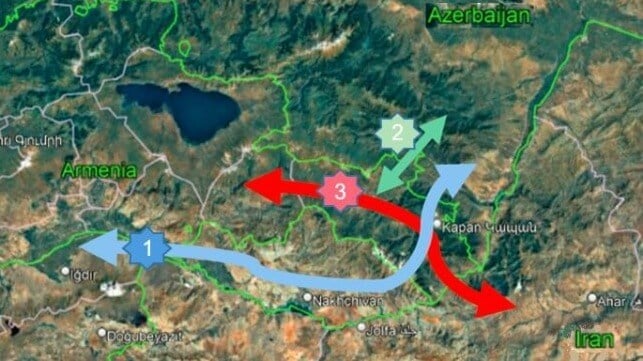U.S. Trade Deal Secures Peace and Influence in the Caucasus

The United States appears to have sealed the solution of a complex geopolitical problem in the Caucasus which has proved impossible to solve since the break-up of the Soviet Union, generating several wars and hindering trade and development in the affected countries over the last 35 years. Armenia’s Prime Minister Nikol Pashinyan and Azerbaijani President Ilham Aliyev signed an agreement at the White House on August 8, which has a good chance of resolving issues between the two countries - and which increases US and Turkish influence in the region at the expense of Iran and Russia.
Newly created independent states were left in 1991 with borders delineated under the old Soviet regime. Ethnic and religious minorities were left on the wrong side of borders, which did not matter when all were part of the Soviet super-state, but mattered when the countries concerned became independent.
The exclave of Nakhchivan was separated from the rest of Azerbaijan by 20 miles of hostile Armenia (1, top). The ethnic Armenian population of Nagorno-Karabakh, surrounded by Azeris, now had to travel through a hostile Azerbaijan to keep contact with Armenia (2). Iran maintained that it had a right of passage through the 20-mile-wide corridor (3) from its border across Armenian territory, using it as a trade/truck route through to Georgia and Russia. It established consulates staffed with armed security guards along the route, and staged aggressive military maneuvers on the border whenever it felt its access was threatened.
The agreement negotiated bilaterally in Abu Dhabi but finalized in Washington appears to provide American reassurances that Armenia and Azerbaijan will be able to transit “hostile” territory to support their isolated nationals without hindrance, with the United States now fulfilling the guarantor role previously (and ineffectively) played by Russia. Indeed, Russia attempted to sabotage the bilateral negotiations in order to preserve its influence over the two countries as a mediator.
For Turkey, this represents huge progress towards achieving President Erdogan’s dream of building a Turkic bloc, linked by the so-called Zangezur corridor through Turkey to Azerbaijan, then across the Caspian to Turkmenistan. The existing but moribund railway route from Turkey directly into the Nakhchivan enclave, then across Armenia into Azerbaijan and Baku can be restored, and an East-West corridor established. Under the label of the Trump Route for International Peace and Prosperity, the agreement appears to cover the award of an infrastructure management contract to a US company.
For Iran, there will now be an American presence directly cutting across its trade/truck route through Armenia into Georgia and Russia. Notwithstanding professions of friendship, plans to upgrade the rail route from Iran through Baku to Russia never seemed to make progress, nor a similar trucking route, probably because behind professions of friendship there is profound mistrust. This will make Iran and Russia more dependent on sanctions-free sea traffic across the Caspian - and even this route is threatened because Russia and Iran are divided by the territorial waters in the central Caspian belonging to Azerbaijan and Turkmenistan. This is another blow for Iran’s dreams of regional dominance, on top of its loss of influence in Lebanon, Syria and Iraq. To make matters even worse, there is the worry that Azerbaijan on its northern border might even accede to the Abraham Accords and join NATO.
If the agreement holds, and confidence can be established under American overwatch, then there are likely to be significant consequences for the development of trade routes and energy exports.
